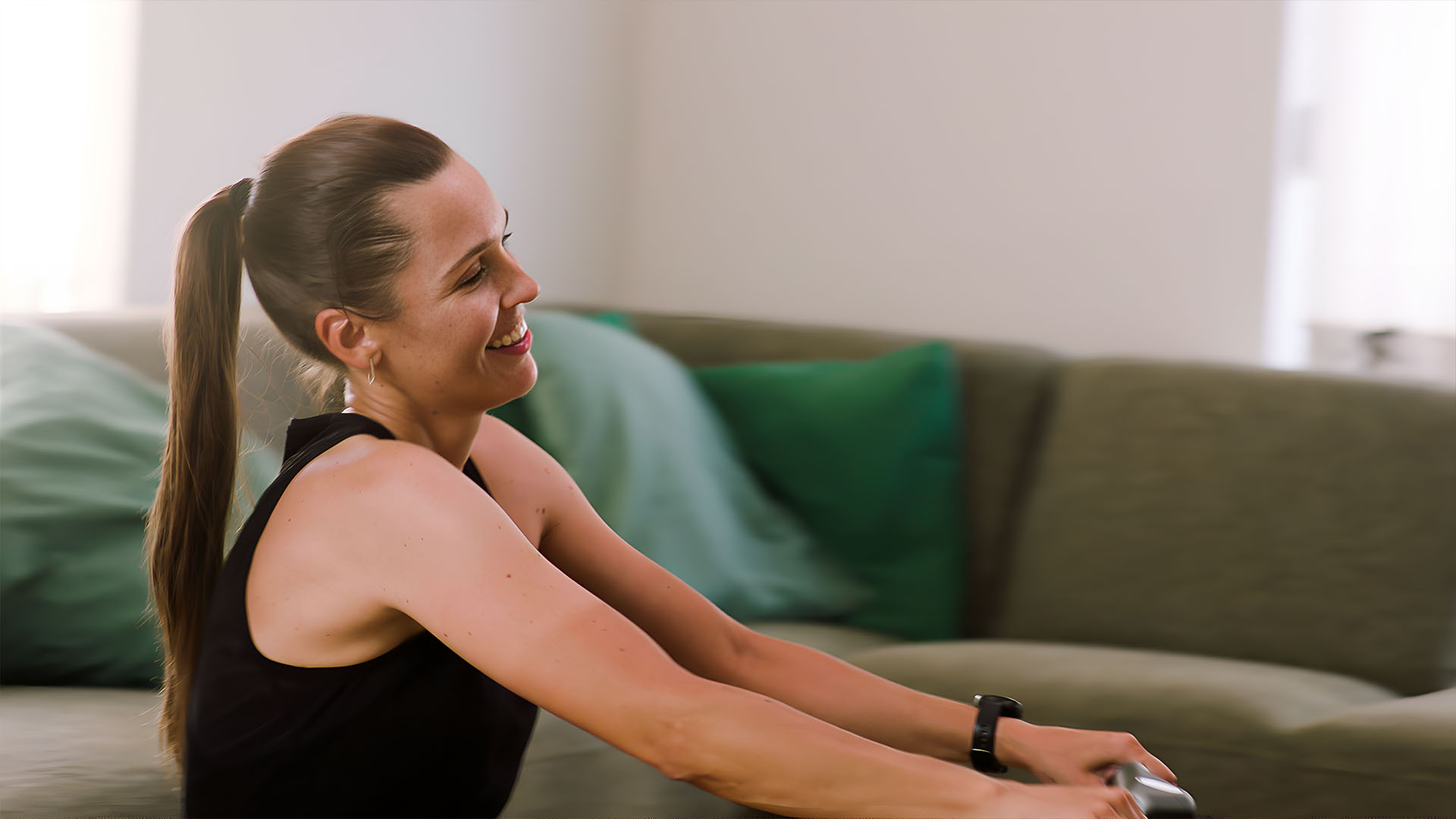How to Protect Your Floor When Using an Indoor Rower

read
An indoor rowing machine is a brilliant addition to any home workout routine. It builds strength, improves cardiovascular fitness, and provides a low-impact, full-body workout. But before you get rowing, there’s a practical question many home users ask: will a rowing machine damage my floors?
Whether your home has hardwood, carpet, vinyl, or tile, it’s worth considering how to protect your flooring from wear and tear. This article explains how indoor rowers interact with different floor types, whether you need a mat underneath, and the best ways to keep your floors in great condition while you row.
Can rowing machines damage floors?
In short, yes. While rowing machines don’t crash or slam like some other fitness equipment, they can still cause damage to your home gym over time. The risk depends on your floor type, how often you row, and whether your rower shifts slightly during use.
On hardwood and vinyl, the feet of the machine can cause dents, scratches or scuffs, especially with repeated use. Tile floors can crack under concentrated pressure if the machine rests on an uneven surface or grout line. Carpet may not scratch, but heavy machines can leave permanent indentations, and fibres may become damaged if the rower moves around.

Sweat is another common issue. Drips from intense sessions can stain or warp some surfaces and may lead to mildew if absorbed into carpet. Even dust kicked up by the machine can get ground into the floor or sucked into moving parts.
That said, not everyone experiences floor damage. Some rowing machines remain stable and cause minimal impact. However, given the cost of repairing flooring, many people choose to take simple precautions just in case.
Do you need a mat under your rowing machine?
Technically, no. Most rowing machines don’t require a mat. But in almost every case, using one is a smart move. A mat acts as a buffer between your machine and your floor, preventing damage while also improving your overall setup.

Here’s why a mat is worth considering:
- It prevents scratches and dents by cushioning the rower’s feet and spreading its weight more evenly.
- It reduces noise and vibration, especially on hard surfaces like wood or tile.
- It provides extra grip, helping to keep the rower stable during powerful strokes.
- It catches sweat and dust, making your workout area easier to clean.
Rubber mats are a popular choice, offering excellent grip, cushioning and durability. Mats made from PVC or foam are also widely used. Many people opt for a mat designed specifically for fitness equipment, but even a yoga mat or carpet remnant offers more protection than a bare floor alone.
Best practices for different floor types
Different types of flooring react in different ways to rowing machines. Here's what to watch for and how to protect each one.
Hardwood and laminate floors
Hardwood floors look great, but they’re particularly vulnerable to scuffs, dents and moisture. The repeated pressure of a rowing machine can compress the wood over time, and any small movement may leave visible scratches.
If sweat drips onto hardwood, it can cause discoloration or warping, especially if left for a while. Laminate flooring may be more resistant to surface wear, but it can still dent under pressure or become slippery when wet.

The best way to protect wooden floors is by using a mat underneath the machine. A rubber or dense PVC mat will absorb pressure and prevent direct contact with the floor. Try to choose a mat that extends slightly beyond the rower’s footprint. And if you ever move the machine, roll or lift it, don’t drag it across the floor.
Carpet
At first glance, carpet might seem like the perfect surface for a rowing machine. It’s soft, quiet, and forgiving. But carpets have their own challenges. The machine’s feet can sink into the pile, making the rower feel unstable. Carpet fibres can also get crushed or pulled if the machine shifts, and sweat can soak in, leaving behind odours or moisture damage.
To protect the carpet, use a firm mat that provides a stable base. Rubber or composite exercise mats work well, especially if they have a nonslip underside to stop them sliding around. If you have a very thick carpet, placing a hard board under the mat may add extra support.
Using a mat also helps to keep the area cleaner and protects the machine from pulling in fibres or dust.
Vinyl and tile floors
Vinyl flooring is durable and popular in home gyms, but it can dent under the weight of a heavy rower. Some rubber materials can also react with vinyl, causing discoloration over time. Meanwhile, tile floors are hard and resistant to wear but may crack if the pressure is focused on a small area, particularly over grout lines or uneven tiles.

Here, too, a mat makes all the difference. It spreads the load evenly and creates a slight cushion to reduce the risk of damage. If using a rubber mat on vinyl, double-check that the material is suitable for long-term contact, or place a thin cloth layer between the mat and floor just in case.
On tile, a mat also helps to absorb vibration and keep the machine stable on slick surfaces.
Final tips for protecting your floors
A good mat is your best line of defence, but it’s not the only thing you can do to keep your floors safe, especially when giving it your all during a sprint or online race. Here are a few more helpful tips:
- Wipe up sweat and moisture after every session, especially on wooden or absorbent floors.
- Keep the area under and around your rowing machine clean to prevent grit from scratching the floor.
- Use the machine’s wheels if it has them to move it, and avoid dragging it across the floor.
- Check that the feet are sitting level and that no part of the machine is putting extra pressure on one side.
- Choose a mat with enough thickness and grip to match your floor type and workout intensity.
Conclusion
Indoor rowing is one of the most rewarding forms of exercise you can do at home, and with a few precautions, there’s no reason it should damage your floors. While rowing machines are designed to be stable and gentle in motion, they can still cause wear over time, particularly on delicate surfaces.

The simplest and most effective way to protect your floors is to place a mat underneath your rower. It absorbs shock, prevents scratches, and reduces noise. Whether your floor is hardwood, tile, carpet, or vinyl, a good mat will help you row with confidence, knowing your workout isn’t leaving a mark.
By planning ahead and using the right floor protection, you’ll keep your home looking great and your rowing sessions just as enjoyable.
